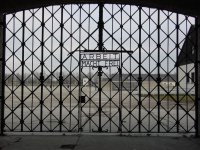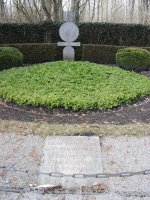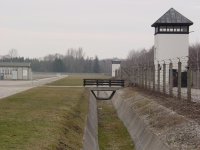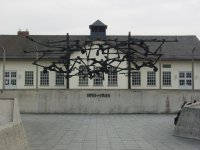You are using an out of date browser. It may not display this or other websites correctly.
You should upgrade or use an alternative browser.
You should upgrade or use an alternative browser.
International Holocaust Remembrance Day
- Thread starter MRB1
- Start date
Register to hide this ad
I've encountered people from time to time who really don't understand the enormity of what happened in Europe under the Third Reich. I recommend to those folks that they read the book "Justice at Nuremberg" by Robert Conot. It's the definitive history of the main war crimes trial...an exhaustively documented account of how the murder of millions was planned and carried out by people who thought they were doing what was best for their country...
[ame]https://www.amazon.com/Justice-at-Nuremberg-Robert-Conot/dp/0881840327/ref=sr_1_1?crid=W112S499L91M&keywords=justice+at+nuremberg+book&qid=1643349528&sprefix=justice+at+%2Caps%2C76&sr=8-1[/ame]
[ame]https://www.amazon.com/Justice-at-Nuremberg-Robert-Conot/dp/0881840327/ref=sr_1_1?crid=W112S499L91M&keywords=justice+at+nuremberg+book&qid=1643349528&sprefix=justice+at+%2Caps%2C76&sr=8-1[/ame]
- Joined
- Apr 4, 2006
- Messages
- 19,489
- Reaction score
- 30,741
After all the documentaries, movies, museums, books etc. there are STILL ignorant, stupid and brain dead people who deny it ever happened. And we wonder why things like this happen in the first place!
blues7
Member
I was in Paris some years ago and visited the Holocaust Memorial in that city where my cousin's father's name is inscribed among all the others who were rounded up in 1942 and sent to Drancy and ultimately the concentration camps where they were murdered.
Never forget!
Never forget!
In the late 80s I had the honor to be in Israel on the Day of Remembrance. At noon, sirens sounded throughout the country, and the entire country come to a complete halt. Freeway traffic completely stopped, people got out of their cars and stood at attention for at least a full minute, until the sirens stopped sounding. Nothing moved - total silence over the entire country. Total silence. It still gives me goosebumps to this day. You'd never see that form of respect and reverence in this hate-filled country.
I went to Dachau. A mind trip. It still stank in the crematoria. The dirt was black from ashes. This was in 1979. So, 34 years after.
I was stationed in Augsburg/Munich and drove by Dachau many times. One day I noticed that the gates were open and I drove in. This was in 1961 and they were just starting to plan the museum. I asked if I could look around and they said OK but don't touch or take anything. I got to go through the 'medical' buildings, the ovens, the showers, the burial ditches, everything but the barracks. In one building there were several tables with photos. I can still remember those. I don't know what they show at the museum but I don't think they display some of those photos. It's a very sobering place.
I was stationed in Augsburg/Munich and drove by Dachau many times. One day I noticed that the gates were open and I drove in. This was in 1961 and they were just starting to plan the museum. I asked if I could look around and they said OK but don't touch or take anything. I got to go through the 'medical' buildings, the ovens, the showers, the burial ditches, everything but the barracks. In one building there were several tables with photos. I can still remember those. I don't know what they show at the museum but I don't think they display some of those photos. It's a very sobering place.
I've been to Dachau three times over the years...it's a very somber place. The spirits of the dead are all around...
Attachments
Rpg
Member
My father’s first law partner (and my godfather) escaped from Germany in a piano crate in 1938.
He served as a prosecutor at the Nuremberg trials after the war.
His law practice focused on reparations.
From early in my life, I was unusually well informed about the Holocaust.
He served as a prosecutor at the Nuremberg trials after the war.
His law practice focused on reparations.
From early in my life, I was unusually well informed about the Holocaust.
Absalom
SWCA Member, Absent Comrade
And Dachau isn‘t the worst by a long shot.
The camps in Germany that see the most visitors, especially Dachau, conveniently close to Munich, Oktoberfest and all that, were hellish places, and many Jews were among the victims held and murdered there.
But they were originally built by the Nazis to hold political prisoners, and continued to primarily have that function. In the 30s some prisoners actually served time in Dachau and were released. Horrific as these camps were, they weren‘t really part of the plan for the Holocaust.
For that you have to go to what was then German-occupied Poland. Auschwitz had a dual purpose as a slave labor depository for industries that were encouraged to build in the vicinity, and as an extermination site for those who could not work, and later for Jews deported from Western Europe in general. And for the most intense phase of the Holocaust, the so-called Operation Reinhardt 1942/43 which killed the remaining 1.8 million Polish Jews, killing sites were built that weren‘t really concentration camps because the victims didn‘t live long enough to need a camp: Treblinka, Belzec, Sobibor.
There, the Nazis actually tried to cover their tracks. Not much to see there nowadays except monuments.
The camps in Germany that see the most visitors, especially Dachau, conveniently close to Munich, Oktoberfest and all that, were hellish places, and many Jews were among the victims held and murdered there.
But they were originally built by the Nazis to hold political prisoners, and continued to primarily have that function. In the 30s some prisoners actually served time in Dachau and were released. Horrific as these camps were, they weren‘t really part of the plan for the Holocaust.
For that you have to go to what was then German-occupied Poland. Auschwitz had a dual purpose as a slave labor depository for industries that were encouraged to build in the vicinity, and as an extermination site for those who could not work, and later for Jews deported from Western Europe in general. And for the most intense phase of the Holocaust, the so-called Operation Reinhardt 1942/43 which killed the remaining 1.8 million Polish Jews, killing sites were built that weren‘t really concentration camps because the victims didn‘t live long enough to need a camp: Treblinka, Belzec, Sobibor.
There, the Nazis actually tried to cover their tracks. Not much to see there nowadays except monuments.
Attachments
bushmaster1313
Member
About 25 years ago I was sitting in a corner of a room with my back against the two walls. An older man came over to me and said: “I once sat 3 days in the corner of a cattle car on the way to Auschwitz.”
And Dachau isn‘t the worst by a long shot.
The camps in Germany that see the most visitors, especially Dachau, conveniently close to Munich, Oktoberfest and all that, were hellish places, and many Jews were among the victims held and murdered there.
But they were originally built by the Nazis to hold political prisoners, and continued to primarily have that function. In the 30s some prisoners actually served time in Dachau and were released. Horrific as these camps were, they weren‘t really part of the plan for the Holocaust.
For that you have to go to what was then German-occupied Poland. Auschwitz had a dual purpose as a slave labor depository for industries that were encouraged to build in the vicinity, and as an extermination site for those who could not work, and later for Jews deported from Western Europe in general. And for the most intense phase of the Holocaust, the so-called Operation Reinhardt 1942/43 which killed the remaining 1.8 million Polish Jews, killing sites were built that weren‘t really concentration camps because the victims didn‘t live long enough to need a camp: Treblinka, Belzec, Sobibor.
There, the Nazis actually tried to cover their tracks. Not much to see there nowadays except monuments.
Being in Dachau was difficult enough for me...I doubt I could bring myself to visit Auschwitz.
One of the things that was uniquely evil about the Holocaust was the fact that the deaths of millions of unarmed, non-combatant, defenseless civilians wasn't a byproduct of the war, but the result of a deliberate, planned, calculated government program. In scale and scope, it really was unprecedented in history.
There was an entire bureaucracy set up within the German government to construct and carry out mass murder. People went to work every day in offices and managed the contracts and programs for building the camps, designing and installing the ovens, procuring supplies such as Zyklon B and barbed wire, ordering food for the guards, etc., etc. They functioned the same way government employees do almost anywhere...except they were in the business of murdering human beings.
Hannah Arendt coined the phrase "the banality of evil" when she wrote about the trial of Adolph Eichmann...it's so apt...
What did Hannah Arendt really mean by the banality of evil? | Britannica
Visited Buchenwald with my wife and Mom back in 2003. My mom was 27 years old when the camp was liberated and remembered when Edward Murrow made one of his famous radio addresses (from Buchenwald). To watch/observe as she walked around was one of those million dollar moments.
Absalom
SWCA Member, Absent Comrade
…..
Hannah Arendt coined the phrase "the banality of evil" when she wrote about the trial of Adolph Eichmann...it's so apt...
What did Hannah Arendt really mean by the banality of evil? | Britannica
As the article describes, Arendt‘s concept generated a significant and long-running controversy.
But I find it to be a quite fitting characterization for the type of people you describe. I think Arendt‘s problem was that of all the Nazis Eichmann specifically was not a particularly good example for that banality, given his leadership role and all that has come out about his ideological motivations. He just played the apolitical bureaucrat in court, and in a way she fell for it.
The most thorough work to date on understanding how Germans became perpetrators has been done by the American historian Christopher Browning. His book “Ordinary Men” deals specifically with police reservists. And he has also written the (so far) definitive account of the evolution of the Holocaust 1939 to 1942 with “The Origins of the Final Solution”, which I just discovered for free as a downloadable pdf. at this link, if you want to check it out:
https://bhecinfo.org/wp-content/upl...ish-Policy-September-1939-March-1942-2004.pdf
Last edited:
I remember visiting the Holocaust museum in DC. My teenage son, and a friend of his were with us. I insisted on them both visiting the museum. They were shook up by what they saw and heard. As was I.
But I felt it important they learn about the atrocities man does. With the hope they do not allow it as they grow older.
But I felt it important they learn about the atrocities man does. With the hope they do not allow it as they grow older.
Last edited:
Similar threads
- Replies
- 20
- Views
- 1K
- Replies
- 9
- Views
- 2K






